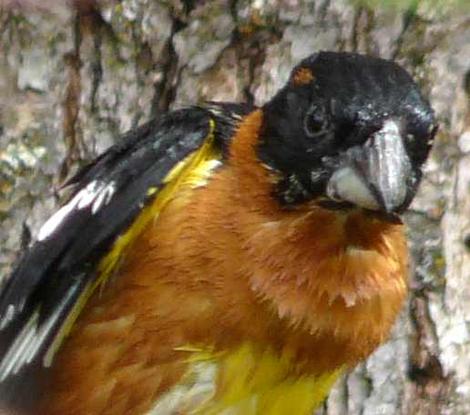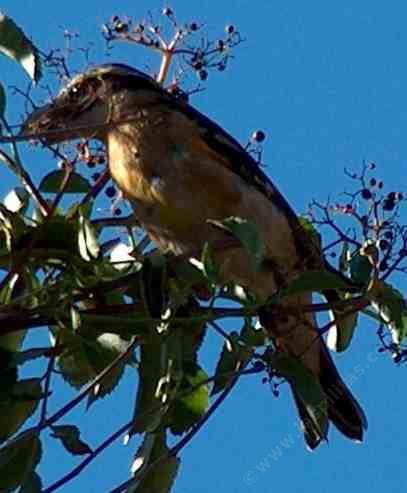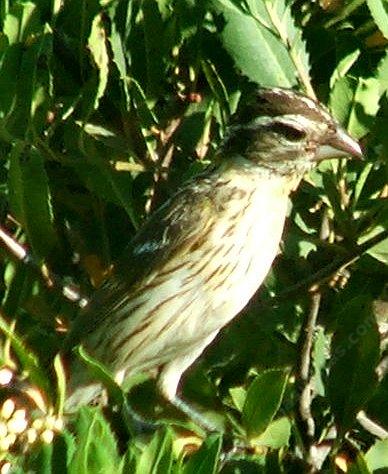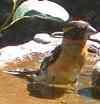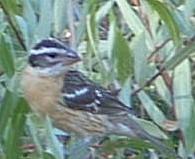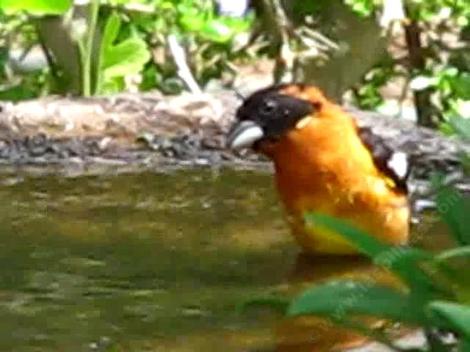Black-headed Grosbeak, Pheucticus melanocephalus
These are rather clever, alert birds. They'll usually know you are there before you know they are there.
Migration of the Black-headed Grosbeak
The Black-headed Grosbeak spends the winter, from around August to May, in Mexico.
Range of the Black-headed Grosbeak
The Black-headed Grosbeak is found throughout the western United States in the summer. They are not found in the high elevations or the desert. The Rose-breasted grosbeak, a similar species that is found in the eastern United States, hybridizes with our Black-headed grosbeak in the central plain states. These two species where previously separated by the large expanse of prairie that neither species found to be a suitable habitat. However with the establishment of so many cities with tree lined streets, both species have moved in.
Diet of the Black-headed Grosbeak
The Black-headed Grosbeak has an odd diet for a bird with a big seed eating beak. It eats manly insects (including the Monarch butterfly), spiders and snails throughout most of the year. This huge beak allows them to take large grasshoppers and other arthropods with tough exoskeletons. They glean these insects from trees. These birds are often seen as pest in orchards for eating fruit. However, they do their part to reduce garden pests in those same orchards. In the fall they do eat berries, fruits, seeds, and buds. They may also feed on the ground. Some of their favorite fall foods include Choke Cherry, Prunus ilicifolia, Catalina Cherry, Prunus lyonii, and Elderberry, Sambucus mexicana. The Black-headed grosbeak seems to need water as it is often seen drinking and bathing in the birdbath.
Habitat/ Plant community of the Black-headed Grosbeak
The Black-headed Grosbeak likes open oak woodlands with deciduous trees.
Nesting habitat Black-headed Grosbeak
The Black-headed Grosbeak prefers to nest near a water source. It builds a cup-shaped nest of sticks lined with roots and other soft fibers in a shrub or tree.
How to attract the Black-headed Grosbeak to your garden
The Black-headed grosbeak likes open oak woodlands, Riparian habitats, and chaparral. They especially like birdbaths. They will eat many of your garden pests. Some good plants to plant to attract these birds are Choke Cherry, Prunus ilicifolia, Catalina Cherry, Prunus lyonii, and Elderberry, Sambucus mexicana. These plants are excellent for many other birds as well and excellent garden shrubs.
